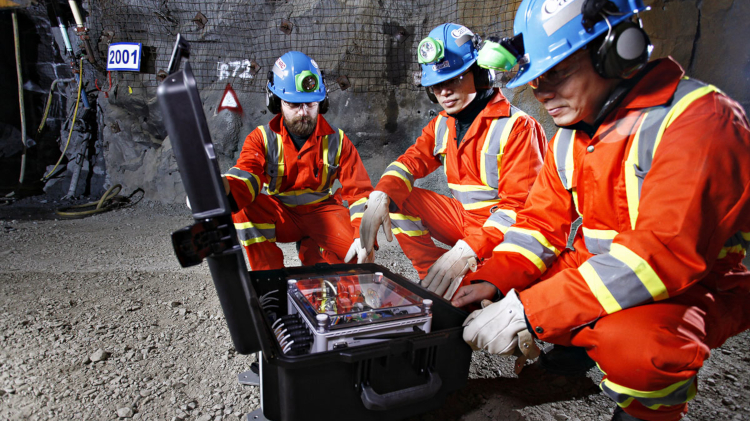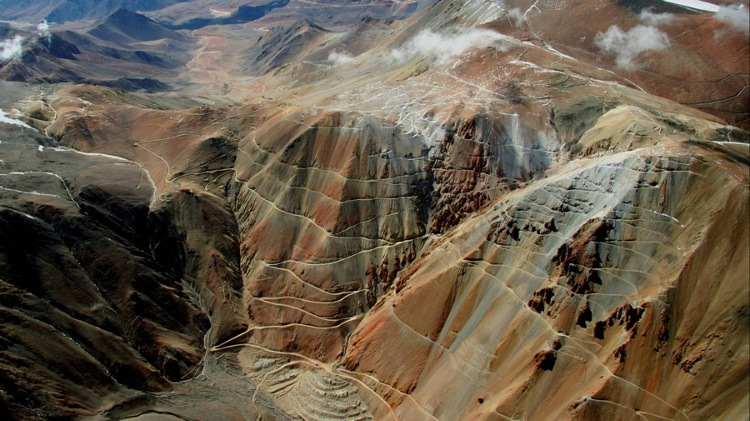Mark Bristow will be named president and CEO of the New Barrick Group following the merger of Barrick Gold and Randgold. Courtesy of Randgold Resources.
Welcome back to your weekly mining news recap. At the end of the week, we’ll catch you up on the mining news from CIM Magazine and elsewhere that you may have missed. In this week’s headlines: Barrick Gold and Randgold combine forces, Freeport and Rio Tinto sell a majority share of the Grasberg copper mine, and new advances in ground monitoring technologies are keeping miners safer.
******
Barrick Gold and Randgold announced Monday that the companies had agreed to the terms of a recommended share-for-share merger, making the combination of the two companies the largest gold producer in the world. Key to the merger is Randgold president and CEO Mark Bristow, whose unconventional strategy operating mines in Africa brought success to Randgold when other companies were writing down assets. As president of the New Barrick Group, Bristow will be responsible for taking these strategies and applying them to a much larger gold miner.
First Quantum Minerals is facing some legal uncertainty after Panama’s Supreme Court ruled that Law 9 — which was used to approve a mining concession contract between the state and a subsidiary of First Quantum in 1997 — was deemed unconstitutional, Bloomberg reported on Tuesday. While this decision could put the fate of its Cobre Panama copper project in jeopardy, operations at the mine are continuing for the moment and the company says it is “working with the appropriate parties to identify suitable legal remedies.” The project is in the early stages of commissioning.
In order to get the most out of its Wasamac gold project in Val d’Or, Monarques announced Tuesday the parameters of its feasibility study, which utilizes a new cost-cutting form of ore extraction. First put into practice at Agnico Eagle’s Goldex mine, the Rail-Veyor light-rail haulage system is able to unload ore using a series of carts on rails. This electric-powered system is able to navigate tight corners and requires no manpower to operate. The study is being conducted by engineering firm BBA, and is expected to be completed in December of this year.
A new mining pit at the Iron Ore Company of Canada’s (IOC) Wabush 3 project in Labrador is expected to increase the mine’s lifespan by 10 years, CBC reported on Tuesday. The Moss Pit — named after A.E. Moss, who played a big role in the company’s initial exploration and development — will increase the mine’s output by five million tonnes per year and will use existing infrastructure from the company’s other operations. “I couldn't be any happier with the response that we've had as people come back to work, positive attitude, and I think you can kind of feel it in the community,” IOC president and CEO Clayton Walker said. “There's a bit of buzz about the place and I'm excited by that.”
Freeport McMoRan and Rio Tinto have both agreed to a deal with the Indonesian government, relinquishing a majority stake in the Grasberg copper mine, the second largest copper mine in the world, Reuters reported on Wednesday. The deal, worth US$3.85 billion, will grant 51.23 per cent control of Grasberg to Inalum, Indonesia’s state-owned mining company. The 40 per cent of the mine that is currently owned Rio Tinto will be converted into an equity stake, which will then be transferred to Inalum. The parties expressed hope that the deal will be finalized by the end of this year.
Trevali Mining announced Wednesday that a civilian roadblock has temporarily shut down operations at Santander zinc-lead-silver mine in Peru. Protesters from the local community of Santa Cruz de Andamarca alleged that the company was failing to uphold its community investment obligations obliged by Peruvian law, a charge that Trevali denies. According to the company, the roadblock that was preventing the delivery of supplies to the mine has since been disbanded. Reports from local newspapers indicate that the blockade had been ongoing for at least three weeks before Trevali reported the news. The company says that it is speaking with elected community leaders to try and resolve the situation and that operations at the mine will resume within the week.
 Technologies such as real-time data collection from sensor-equipped rock bolts are making ground condition and support monitoring simpler and more cost effective. Courtesy of National Research Council of Canada
Technologies such as real-time data collection from sensor-equipped rock bolts are making ground condition and support monitoring simpler and more cost effective. Courtesy of National Research Council of Canada
Deeper deposits in mines can lead to increased dangers, and companies have been developing new ground monitoring technologies to prevent structural accidents in mines. Innovative data management software, inexpensive LIDAR scanners and computer-assisted video monitoring are all methods that mines have been implementing in order to anticipate failures before they happen.
Lastly for this week, we have our Q&A session with Centre for Excellence in Mining Innovation (CEMI) vice-president Charles Nyabeze as part of our We Are Mining series. Nyabeze speaks about his own path into mining, the importance of new technologies in making mining projects better and more efficient, and how to make mining operations more welcoming for different genders, cultures and people with disabilities. CEMI’s goals for the next year include the creation of a 2019-2024 Clean Mining Network that builds off the success of the CLEER Supercluster.




